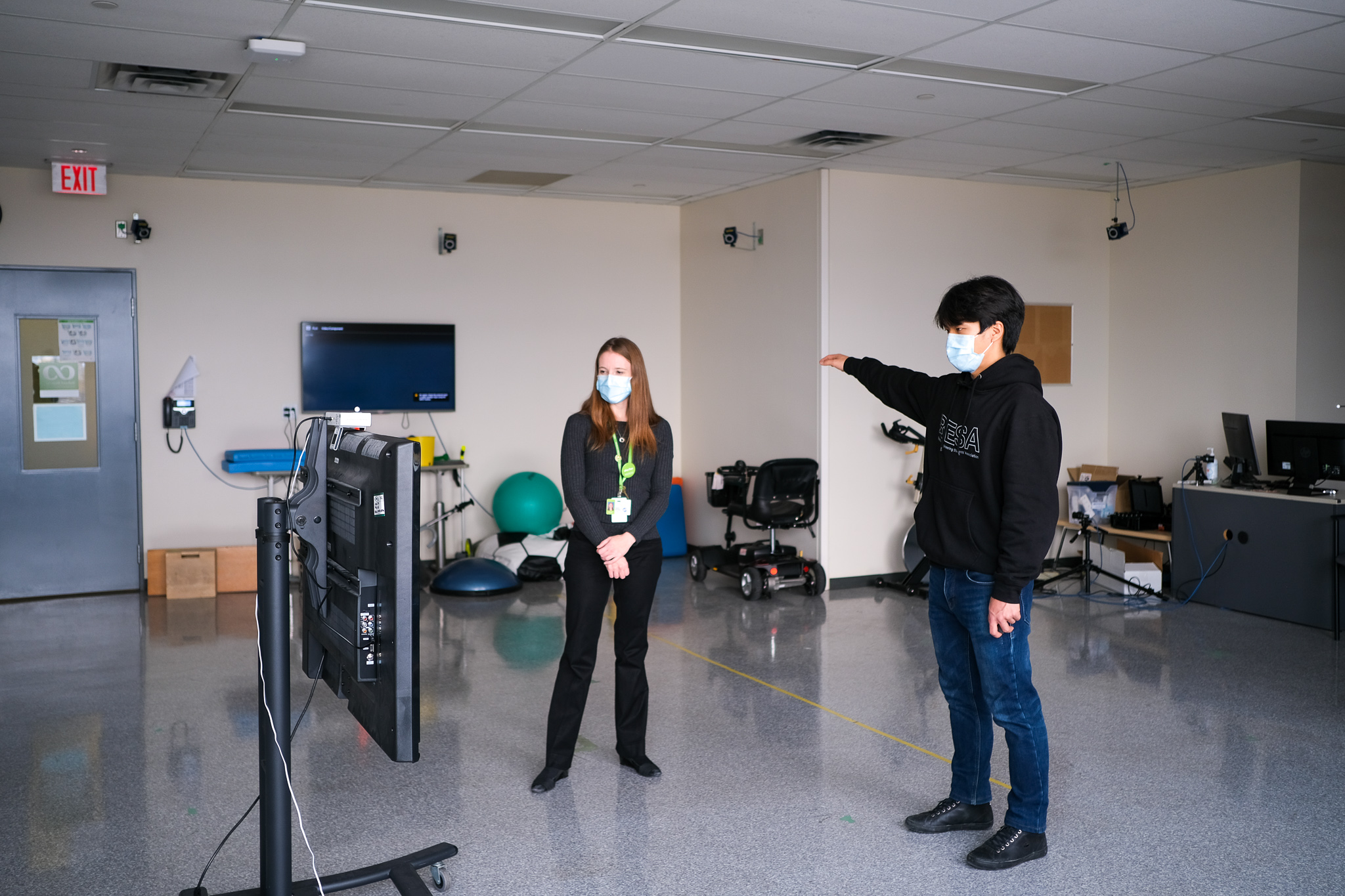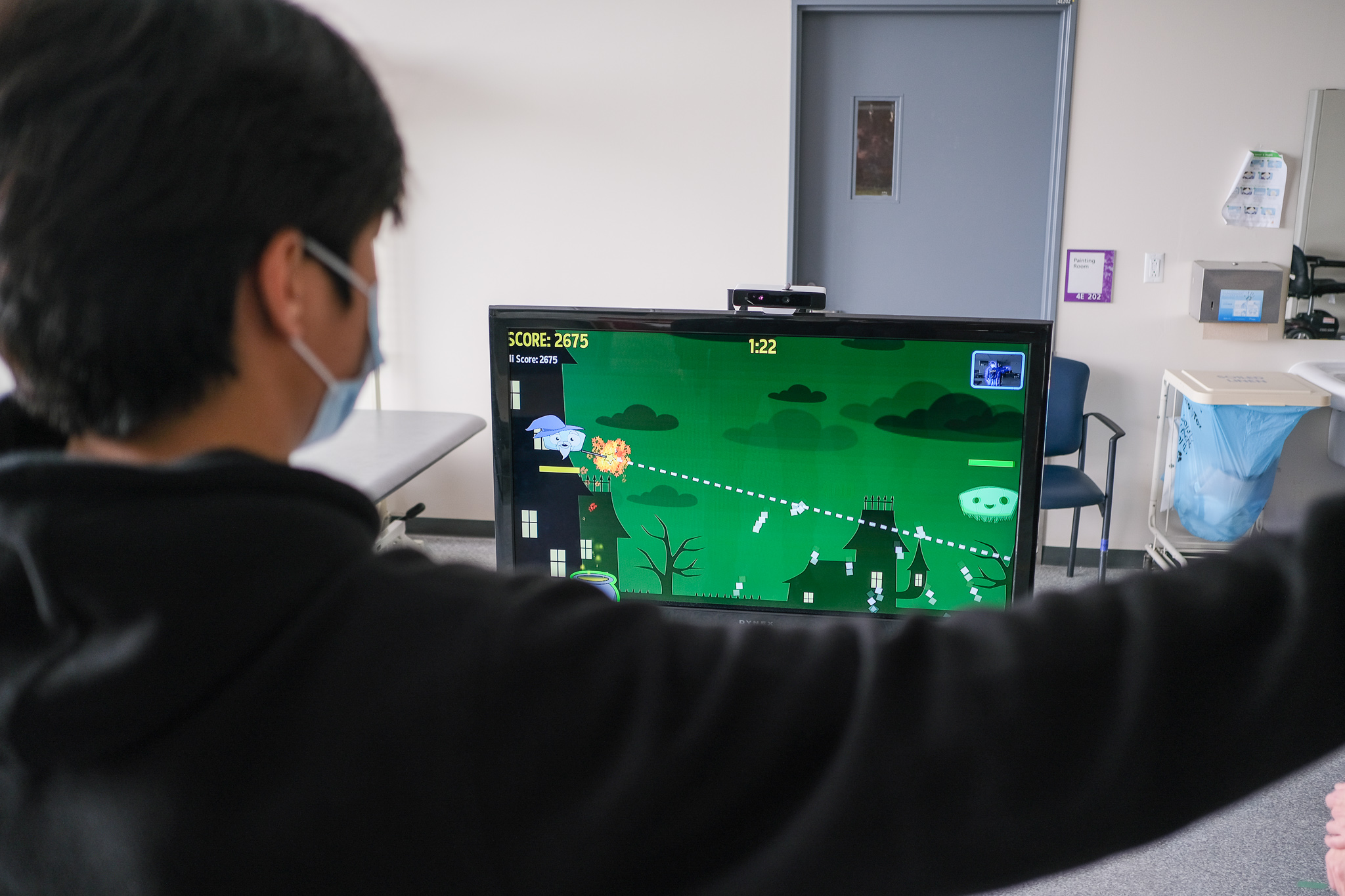
Learning (or relearning) motor skills is hard work. Time, commitment, and access to services are key ingredients on the rehabilitation journey, but they are not always enough – it’s also essential that kids are motivated to engage in the process. Can gamifying the rehabilitation experience lead to better outcomes for kids and their families? This is the question Dr. Elaine Biddiss is trying to address at the Holland Bloorview Kids Rehabilitation Hospital.
“We design and test interactive technologies – largely games and apps – for kids with disabilities,” said Dr. Elaine Biddiss, an associate professor at the Institute of Biomedical Engineering and senior scientist at Holland Bloorview Kids Rehabilitation Hospital. “We recognize that kids come into and progress through life with different physical and cognitive abilities, and we try to create games and apps that support them in their therapies, but also supports them in participation – playing with friends and families, learning something new and meaningful, having fun.”
There is no one-size-fits-all solution for children going through their life experiences, and Biddiss aims to address a diverse set of challenges faced by children from all backgrounds, with solutions that can be tailored to each child’s needs. To design these solutions, her team works closely with healthcare professionals as well as children and their family members to clearly identify the problem. Understanding the problem from multiple perspectives is the first step to coming up with the right solution.
“The technology is there to help our kids in meeting their individualized therapy goals while participating in an activity that can be fun and meaningful,” said Biddiss, who holds the Bloorview Children’s Hospital Foundation Chair in Pediatric Rehabilitation.
A key parameter to success in rehabilitation is motivation. What motivates kids is sometimes quite different from what might keep an adult engaged in the work of rehabilitation and this can present some unique challenges.
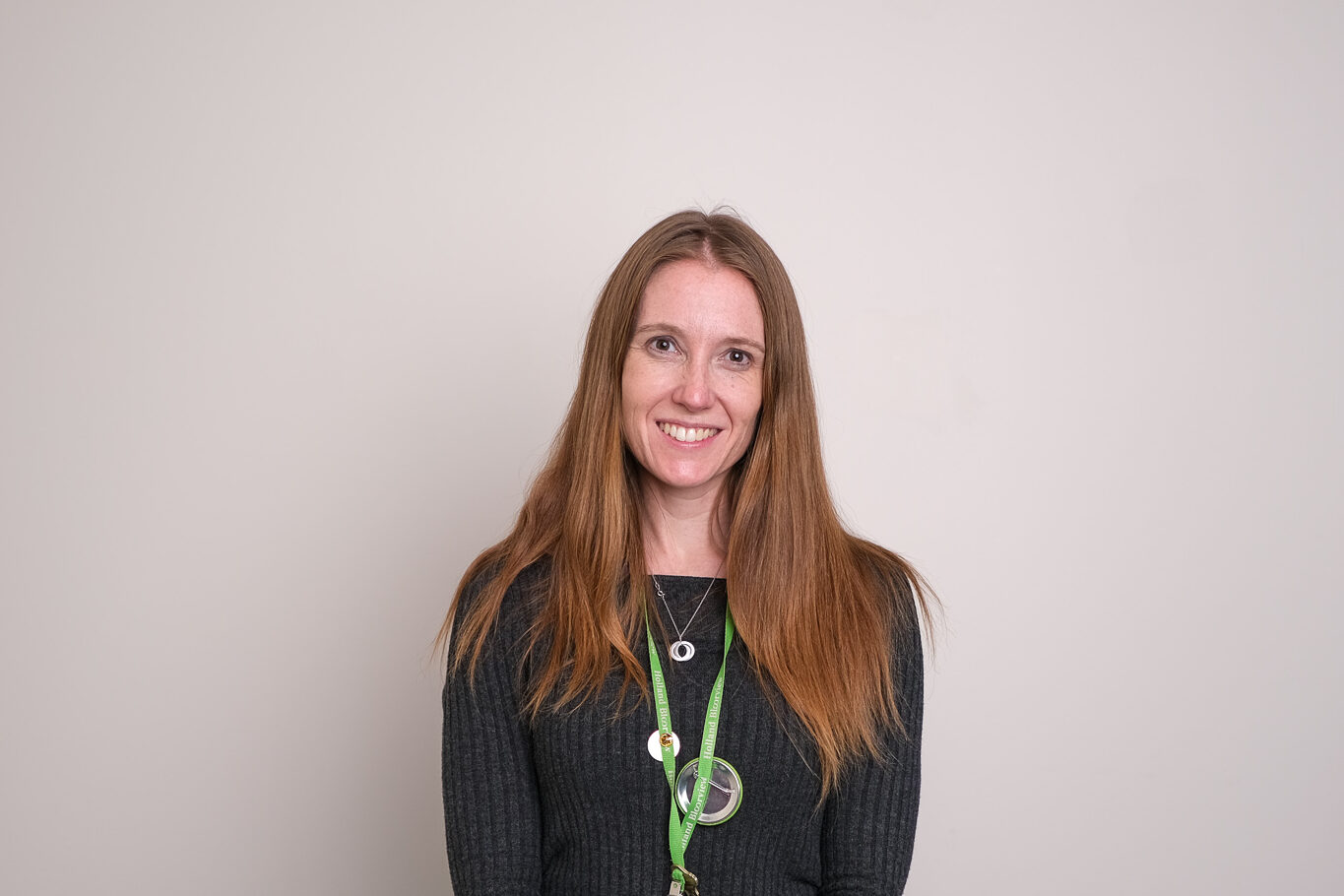
“When you design a therapy game for kids, they first and foremost are expecting a good video game – something that is fun, engaging, multiplayer, with great graphics and a cool story,” explained Biddiss. “While an adult is more likely to be ok with performing the same motion without engaging stimuli, the same can’t be said for children.”
This requires the researchers to step beyond the clinical and technical aspects and understand the human components that go into both the rehabilitation process and good gameplay. It’s also not only the child that needs to be considered, but the entire family unit and how the technology can fit in.
“We have to look at what the parent’s needs are, whether they have siblings, what time of the day they can use the interactive technology, how much time can they dedicate to rehabilitation daily – there are numerous parameters that go beyond just the development of the technologies,” said Biddiss.
Designing technologies is one part of Biddiss’ research, but she also designs studies and measures to evaluate if they are effective and can monitor a child’s progress in rehabilitation. She is also committed to the commercialization of the technology impact through her team’s start-up enterprise, Pearl Interactives, to hospitals, clinics, and other healthcare settings to maximize positive impact for children and youth living with disabilities.
Gamifying the rehab experience
A centre piece of the Biddiss lab is Bootle Blast, a movement-tracking game aimed specifically at engaging kids in their rehabilitation. Developed by Biddiss and her colleagues at PEARL lab, this game uses Orbbec Persee+, a 3D camera to track the movements of children as they perform exercises and manipulate real-life objects to complete game missions, collect points, and unlock new games. In-game characters provide instructions and feedback along the way serving as both “coach” and “cheerleader.”
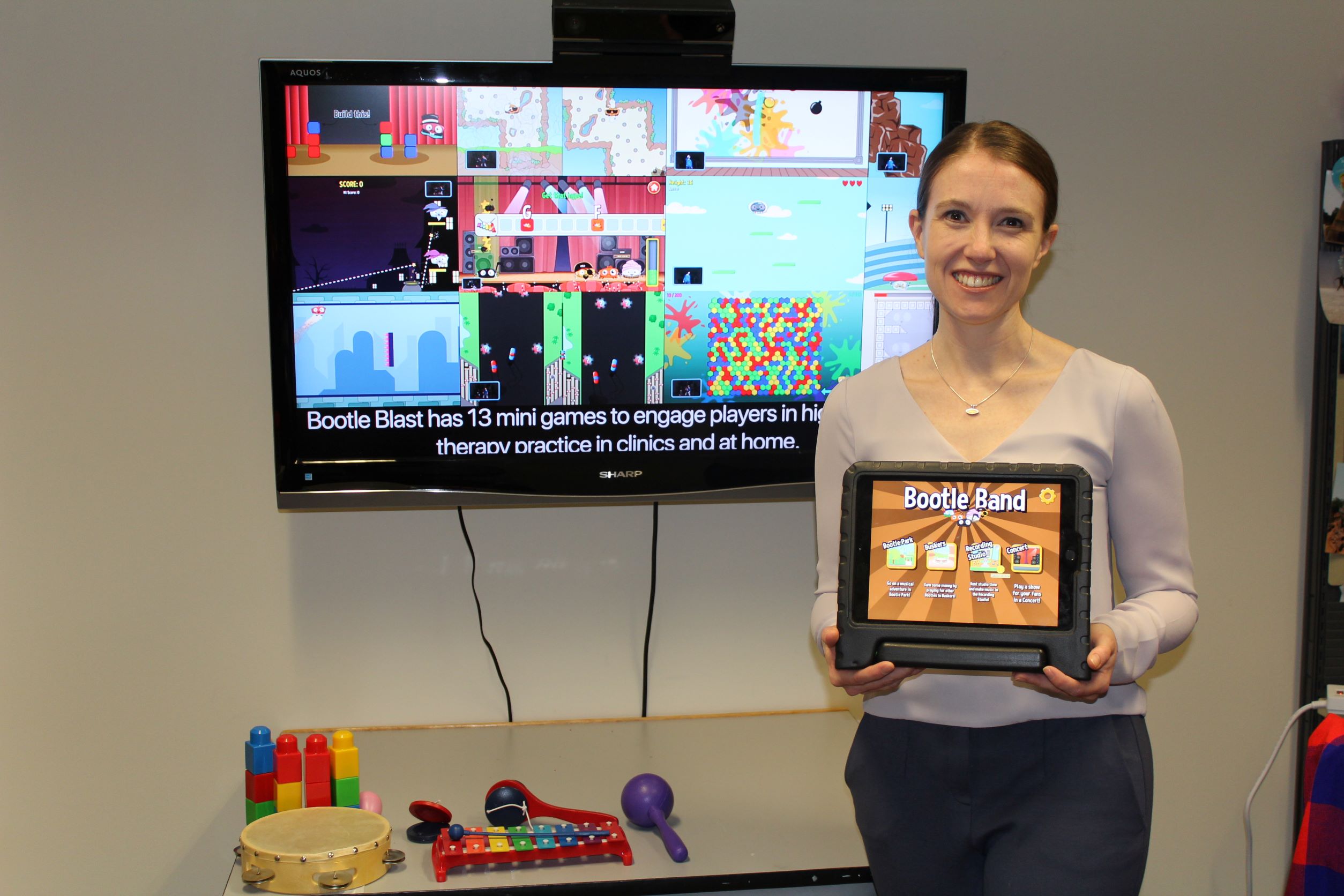
The hope is that by repeatedly playing this game, children can improve their motor skills and make gains in real-world function. While the game was originally designed for individuals with cerebral palsy, it has been used with children with diverse disabilities including stroke, acquired brain injury and spinal cord injury, to name a few.
Pilot study in Costa Rica
“A lot of families in Costa Rica do not have access to rehabilitation: some simply cannot afford it, and others live too far away from a specialized hospital to receive support. Parents in some families work long hours, and there is not much time to “spare” for rehabilitation. These are very important reasons to bring Bootle Blast to my home country,” said Daniela Chan-Viquez, a PhD candidate at University of Toronto’s Rehabilitation Sciences Institute and one of Biddiss’s research trainees.
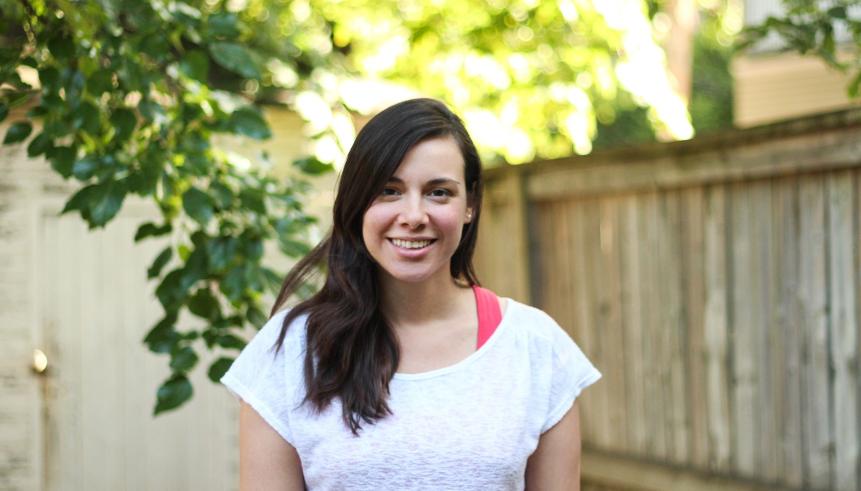
Each child participating in the study receives their own Bootle Blast game and the technology needed to play it. The study has a family-centred approach where participants can set their own weekly playtime goals. Data collection is ongoing and 15 families are expected to complete the trial by January 2023.
“We have received so many heartwarming stories from participating families,” said Chan-Viquez, who is running the study. “One girl who came into the study was unable to button up her school shirt. By the end of the eight-week program, she was able to do one button. Two months later, the parents sent me a text message saying that morning, their daughter was able to do all the buttons on her shirt, and that they were really grateful for being part of the study. The child had kept playing Bootle Blast, as participants are able to keep the system after completing the study.” said Chan-Viquez.
Enhancing tracking accuracy and accessibility
Biddiss and her team are also interested in understanding how & if Bootle Blast can be used to assess and monitor changes in a child’s movement abilities over time. Soowan Choi, a biomedical engineering MASc student, is looking to validate the tracking accuracy of the 3D camera to support these efforts.
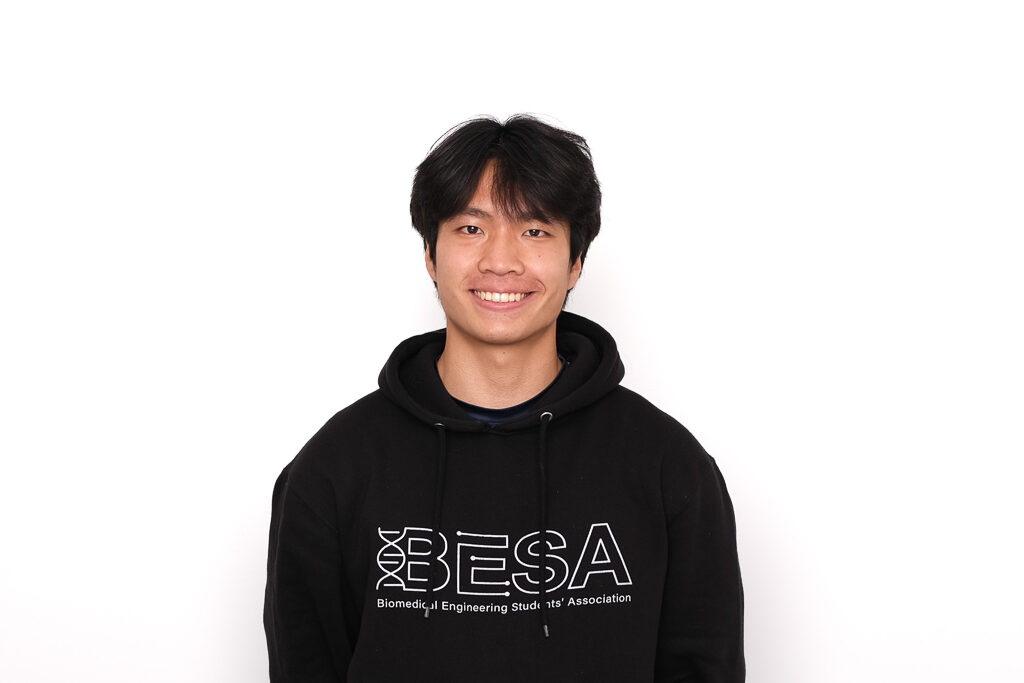
“Right now, children have to come into clinics for their movement abilities to be assessed in-person by a trained clinician,” said Choi. “If we can make the technology robust enough that some of these assessments can be done from the comfort of home with data transmitted securely to clinicians, it would remove geographical barriers and save the patients and the clinicians a lot of time. The first step towards this is to understand how accurately the camera can track movement.”
To evaluate the accuracy of the 3D camera, Choi asks participants to perform various mini-games within Bootle Blast, such as shoulder abduction, bilateral movements, etc. He captures movement data over multiple locations at the wrist, elbow, shoulder, hips, knee, and ankle. Clinically relevant metrics can be derived from these joint data such as smoothness of movement or reach envelope, which is essential when quantifying a client’s functional abilities with Cerebral Palsy.

The data is then compared against a gold standard motion-capture system – like those used in Hollywood films – where reflective markers are placed on various parts of the body.
“The goal is to establish the accuracy of the Orbbec Persee+ as a sensor for tracking movement and completion of therapy exercises during gameplay,” said Choi.
Commercialization with accessibility in mind
Biddiss is committed to making the interactive rehabilitation technologies her team creates available, affordable and accessible to all families.
“Our hope is that we can provide support and technologies to supplement children’s rehabilitation, especially for families who might not have the means to access these types of interventions,” said Biddiss.
Aside from accessibility, there are many other real-life considerations that must be considered when designing rehabilitation interventions and technologies for children such as technology-family-child fit and sustaining engagement.
“As adults we may have a different lens to rehabilitation. But kids want to have fun, with their friends and family. Let us give them really good games to play and at the same time we can try to address some of these really important participation goals. So that is the long-term vision, really good, inclusive, video games that support kids in reaching their play, learning, and wellness goals.” said Biddiss.


